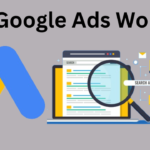Google AdMob is one of the most popular platforms for monetizing mobile apps, offering developers the ability to earn revenue through advertisements integrated into their applications. In 2025, AdMob continues to evolve with advanced tools, enhanced targeting, and better analytics, making it an ideal choice for app developers. This article provides a comprehensive guide on how to maximize earnings with Google AdMob in 2025.
Table of Contents
- What is Google AdMob?
- How AdMob Works
- Types of Ads Offered by AdMob
- Steps to Start Earning with AdMob
- Best Practices for Maximizing AdMob Revenue
- Benefits of Using Google AdMob
- FAQs About Google AdMob Earnings
1. What is Google AdMob?
Google AdMob is a mobile advertising platform that allows developers to display ads within their mobile applications. These ads generate revenue based on impressions, clicks, or conversions.
Key Features
- Integration with Google Analytics for performance tracking.
- Support for various ad formats.
- Advanced targeting options using AI and machine learning.
2. How AdMob Works
AdMob connects advertisers with app developers, creating a mutually beneficial system. Developers integrate AdMob’s SDK (Software Development Kit) into their apps, which then display ads to users.
Revenue Generation
- Cost Per Click (CPC): Earn money when users click on ads.
- Cost Per Mille (CPM): Earn money for every 1,000 ad impressions.
- Rewarded Ads: Users watch ads in exchange for in-app rewards, increasing engagement.
3. Types of Ads Offered by AdMob
- Banner Ads: Small rectangular ads displayed at the top or bottom of the screen.
- Interstitial Ads: Full-screen ads shown at natural transition points, such as between game levels.
- Native Ads: Seamlessly integrated into the app’s design for a better user experience.
- Rewarded Ads: Ads that offer users rewards like coins, points, or extra lives for watching.
- Video Ads: Engaging ads that autoplay and often include a call to action.
4. Steps to Start Earning with AdMob
Step 1: Create a Google AdMob Account
Sign up for an AdMob account using your existing Google account. Fill in the necessary details, including payment information.
Step 2: Add Your App to AdMob
- Log in to your AdMob dashboard.
- Select “Add App” and provide details about your app (e.g., platform, app name).
Step 3: Generate Ad Units
Create ad units for your app by selecting the ad format you want to implement (e.g., banner, interstitial, or rewarded ads).
Step 4: Integrate the AdMob SDK
Integrate the AdMob SDK into your app’s codebase. Google provides detailed documentation for Android and iOS developers.
Step 5: Publish and Monitor
Launch your app and start displaying ads. Monitor ad performance and revenue through the AdMob dashboard.
5. Best Practices for Maximizing AdMob Revenue
- Optimize Ad Placement: Place ads in areas where users are most likely to interact, but avoid disrupting the user experience.
- Experiment with Ad Formats: Test various ad formats to identify which performs best for your audience.
- Use Rewarded Ads Strategically: Encourage users to watch ads by offering valuable in-app rewards.
- Target the Right Audience: Leverage AdMob’s advanced targeting features to reach high-value users.
- Monitor Analytics: Regularly review performance metrics and adjust your strategy as needed.
- Update Your App Frequently: Keep your app updated to maintain user engagement and attract new users.
6. Benefits of Using Google AdMob
- Global Reach: Access to Google’s vast network of advertisers ensures a steady supply of ads.
- High Earning Potential: Competitive CPC and CPM rates maximize revenue.
- Flexible Ad Formats: A wide variety of ad types allows you to tailor monetization to your app’s audience.
- Detailed Analytics: Comprehensive reporting tools help you track and optimize ad performance.
- Easy Integration: AdMob’s SDK is developer-friendly and well-documented.
7. FAQs About Google AdMob Earnings
Q1: How much can I earn with AdMob?
Answer: Earnings depend on factors such as app traffic, user engagement, ad placement, and niche. Apps with high traffic and engaged users can generate significant income.
Q2: Is AdMob free to use?
Answer: Yes, AdMob is free for developers. Google takes a percentage of the ad revenue as its share.
Q3: Can I use AdMob with multiple apps?
Answer: Yes, you can manage and monetize multiple apps from a single AdMob account.
Q4: How often does AdMob pay?
Answer: Payments are made monthly, provided you meet the minimum payment threshold ($100 in most regions).
Q5: Are there any restrictions for using AdMob?
Answer: Yes, your app must comply with Google’s policies, including content guidelines and ad placement rules.
Conclusion
Google AdMob offers a powerful way to monetize mobile apps in 2025. By leveraging its advanced features, optimizing ad placements, and understanding your audience, you can maximize your revenue potential. Whether you are a seasoned developer or a newcomer, AdMob’s tools and resources make it easier than ever to generate income through mobile advertising.










